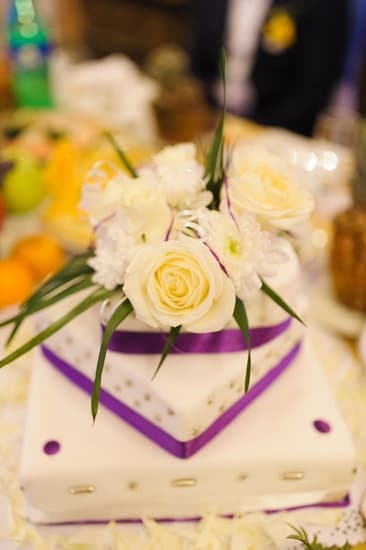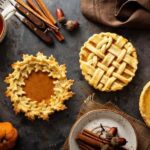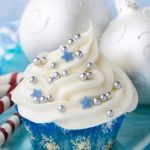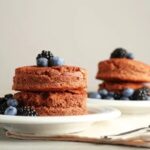Gelatin cake decorations are a fun and creative way to add a unique touch to your baked creations. Whether you are a baking enthusiast or a professional pastry chef, mastering the art of making gelatin decorations can take your cakes to the next level. In this article, we will explore the fascinating world of gelatin cake decorations, starting with a brief history of gelatin in cake decorating.
Dating back to ancient times, gelatin has been used in various culinary applications for its unique properties and versatility. In cake decorating, gelatin is utilized to create intricate designs, shapes, and vibrant colors that can elevate the overall look of a cake. From flowers and ribbons to abstract patterns and edible embellishments, the possibilities with gelatin decorations are endless.
To embark on your journey into the world of gelatin cake decorations, it is essential to familiarize yourself with the tools and materials needed for this artistic endeavor. From molds and food coloring to piping bags and brushes, having the right equipment at your disposal will make the process smoother and more enjoyable. Stay tuned as we delve deeper into the step-by-step guide on preparing gelatin mixtures for cake decorations in the following sections.
Tools and Materials Needed for Making Gelatin Cake Decorations
When preparing to make gelatin cake decorations, it is essential to gather all the necessary tools and materials beforehand to ensure a smooth and successful decorating process. To create stunning gelatin decorations for your cakes, you will need a few key items.
One of the most important tools is a set of silicone molds in various shapes and sizes, which will allow you to mold the gelatin into different designs. Additionally, you will need a small saucepan for heating the gelatin mixture, as well as measuring spoons and cups to accurately portion out the ingredients.
In terms of materials, gelatin powder or sheets are the main components needed to make gelatin cake decorations. Gelatin comes in different strengths or grades, so be sure to select the appropriate type based on your specific recipe requirements. Food coloring or edible paints can also be used to add vibrant colors to your gelatin decorations.
Additionally, consider having a small paintbrush on hand for applying color details or accents to your designs. Lastly, make sure to have a clean workspace and a flat surface where you can work comfortably when creating your gelatin cake decorations.
To begin with making gelatin cake decorations requires precision and attention to detail when selecting and using the right tools and materials for the job. By ensuring that you have all the necessary items on hand before starting your decorating project, you can set yourself up for success in creating beautiful and intricate gelatin decorations for your cakes.
Be sure to follow the step-by-step guide on how prepare the gelatin mixture provided in this article previous section with care, as each component plays an important role in achieving professional-looking results when decorating cakes with gelatin designs.
Step-by-Step Guide on How to Prepare Gelatin Mixture for Cake Decorations
Gelatin cake decorations add a beautiful and elegant touch to any dessert, whether it’s a simple birthday cake or an elaborate wedding cake. Learning how to make gelatin cake decorations is a fun and creative process that can take your baking skills to the next level. In this section, we will guide you through the step-by-step process of preparing the gelatin mixture for your cake decorations.
To start, you will need unflavored gelatin powder, water, and food coloring of your choice. Begin by blooming the gelatin in cold water according to the package instructions. Once the gelatin has bloomed, gently heat the mixture over low heat until the gelatin is completely dissolved. Be careful not to boil the gelatin as it can lose its thickening properties.
After dissolving the gelatin, you can add food coloring to achieve your desired hue for the decorations. Stir well to ensure that the color is evenly distributed throughout the mixture. Depending on the design you have in mind, you can pour the colored gelatin into molds or use tools like icing bags with small tips to create intricate shapes directly onto parchment paper.
Allow the gelatin decorations to cool and set completely before gently removing them from the molds or parchment paper. Now you’re ready to adorn your cakes with these stunning homemade decorations.
| Tools Needed | Materials Needed |
|---|---|
| Icing bags with small tips | Unflavored gelation powder |
| Molds | Water |
| Food coloring | Parchment paper |
Techniques for Molding Gelatin Into Different Shapes and Designs
Gelatin cake decorations are a fun and creative way to add unique designs and shapes to your cakes. Molding gelatin allows you to create intricate decorations that can elevate the presentation of any cake. By using different techniques, you can achieve a variety of shapes and designs that will surely impress your guests.
One popular technique for molding gelatin is using silicone molds. These molds come in various shapes and sizes, allowing you to easily create flowers, leaves, or even intricate patterns. To use silicone molds for gelatin decorations, simply pour the prepared gelatin mixture into the mold and allow it to set in the refrigerator until firm. Once set, carefully remove the molded gelatin and place it on top of your cake.
Another technique for molding gelatin is using cookie cutters. This method works well for creating simple shapes like hearts, stars, or circles. Simply pour the gelatin mixture onto a flat surface lined with plastic wrap or parchment paper. Once set, use the cookie cutters to cut out the desired shapes. These molded gelatin pieces can then be arranged on top of your cake to create visually appealing designs.
For more advanced designs, consider using special tools like shaping tools or even piping bags with small tips to create intricate details on your gelatin decorations. These tools allow for more precision and control when molding gelation into different shapes and designs, giving you the freedom to experiment with various patterns and textures on your cakes.
| Gelatin Molding Techniques | Benefits |
|---|---|
| Silicone Molds | Allows for intricate designs |
| Cookie Cutters | Great for simple shapes |
| Special Tools | Provides precision and control for advanced designs |
Tips and Tricks for Achieving Vibrant Colors in Gelatin Decorations
When it comes to creating eye-catching gelatin cake decorations, achieving vibrant colors is key to making your designs stand out. The color intensity of gelatin decorations can make a significant impact on the overall look of your cake. By following some simple tips and tricks, you can enhance the colors of your gelatin creations and make them visually appealing.
Use Gel Food Coloring
One of the easiest ways to achieve vibrant colors in gelatin decorations is by using gel food coloring specifically designed for use with desserts. Gel food coloring provides intense hues without adding excess liquid that may alter the consistency of the gelatin mixture. Start with a small amount of gel food coloring and gradually add more until you reach the desired color intensity.
Layering Colors
To create multi-colored or gradient effects in your gelatin decorations, consider layering different colored gelatin mixtures. Pour one color into a mold, allow it to partially set, then gently pour another color over it. Repeat this process with as many colors as desired to achieve a visually appealing layered effect.
Enhance With Edible Luster Dust
For an added touch of sparkle and shine to your gelatin decorations, consider dusting them with edible luster dust. This fine powder comes in various metallic shades and can be brushed onto the surface of your finished decorations to enhance their vibrancy and give them a shimmering finish. Be sure to apply the luster dust sparingly for a subtle yet stunning effect on your gelatin creations.
By incorporating these tips and tricks into your process, you can elevate the visual appeal of your gelatin cake decorations and create stunning designs that are sure to impress your friends, family, or clients. Experiment with different techniques and color combinations to unleash your creativity and make each cake decoration unique and visually captivating.
How to Properly Attach Gelatin Decorations to Cakes
When it comes to adding gelatin decorations to cakes, properly attaching them is essential to ensure they stay in place and enhance the overall look of your creation. Here are some tips on how to securely attach gelatin decorations to cakes:
- Use a small amount of clear piping gel or royal icing as “glue” to adhere the gelatin decorations onto the cake. Simply dab a small dot of the adhesive on the back of the decoration before placing it on the cake.
- If you’re working with larger gelatin pieces that may be heavier, consider using toothpicks or skewers as additional support. Insert the toothpick or skewer into the gelatin piece before placing it on the cake for extra stability.
- For more delicate gelatin decorations, such as intricate shapes or designs, a gentle touch is key. Use tweezers or a spatula to carefully lift and place the decorations onto the cake without damaging them.
Properly attaching gelatin decorations not only ensures they stay in place but also adds an extra layer of professionalism to your cake decorating skills. Experiment with different attachment methods to find what works best for your specific design and remember that practice makes perfect.
Storage and Preservation of Gelatin Cake Decorations
Gelatin cake decorations can be a beautiful and creative addition to any cake design, but it’s important to know how to properly store and preserve them to maintain their quality and appearance. Whether you are making gelatin flowers, shapes, or figurines, here are some tips on how to keep them looking their best for as long as possible.
Storage Containers
One of the key factors in preserving gelatin cake decorations is using the right storage containers. Airtight containers or plastic wrap are ideal choices to prevent air exposure, which can cause the gelatin decorations to dry out and lose their shape. Make sure the containers are clean and dry before storing the decorations.
Refrigeration
It is recommended to store gelatin cake decorations in the refrigerator to extend their shelf life. The cool temperature helps to maintain the structure of the gelatin and prevents it from melting or becoming too soft. Be cautious when placing them in crowded areas of the fridge to avoid any accidental damages.
Avoid Humidity and Heat
Gelatin is sensitive to humidity and heat, so it’s essential to keep your decorations away from direct sunlight, heat sources, or moisture. Exposing gelatin decorations to these conditions can cause them to deteriorate quickly, losing their vibrant colors and shape. Store them in a cool, dry place for optimal preservation.
By following these storage guidelines, you can ensure that your gelatin cake decorations stay fresh and visually appealing until you are ready to use them on your next culinary masterpiece. Proper storage not only maintains the look of your creations but also allows you more flexibility in planning ahead for future cake designs. Now that you know how to store and preserve your gelatin cake decorations, you can confidently showcase your artistic skills with confidence.
Creative Ideas for Using Gelatin Decorations in Various Cake Designs
Gelatin decorations offer a versatile and eye-catching way to elevate your cake designs to the next level. There are countless creative ideas for incorporating gelatin decorations into your cakes, whether you’re looking to add a pop of color, texture, or intricate details. Here are some innovative ways to use gelatin decorations in various cake designs:
- Create a whimsical underwater-themed cake by making gelatin sea creatures like fish, shells, and seaweed. These decorations can add depth and dimension to your design, perfect for themed birthday parties or beach weddings.
- Give your cake a touch of elegance with delicate gelatin flowers. Whether you opt for classic roses, daisies, or exotic orchids, these botanical-inspired decorations can turn any simple cake into a work of art.
- Add a playful twist to your dessert table by making gelatin balloons or bubbles. These transparent and glossy decorations can give your cakes a fun and festive vibe, ideal for children’s birthdays or celebratory events.
Incorporating gelatin decorations into your cake designs allows for endless possibilities to showcase your creativity and style. Experiment with different shapes, colors, and textures to truly make your cakes stand out. Whether you’re a seasoned baker or just starting out in the world of cake decorating, don’t be afraid to think outside the box and let your imagination run wild when using gelatin decorations.
Remember that practice makes perfect when it comes to working with gelatin, so don’t get discouraged if your first attempts aren’t flawless. With patience and perseverance, you’ll soon master the art of creating stunning gelatin decorations that will impress all who lay eyes on your beautifully adorned cakes. So roll up your sleeves, gather your tools and materials, and start exploring the endless possibilities of how to make gelatin cake decorations today.
Conclusion and Inspiration to Start Creating Your Own Gelatin Cake Decorations
In conclusion, learning how to make gelatin cake decorations can add a touch of creativity and elegance to your baked creations. With the right tools, materials, and techniques, you can easily create stunning designs that will impress your family and friends. By following the step-by-step guide provided in this article, you can master the art of molding gelatin into different shapes and designs to suit any occasion.
Experimenting with vibrant colors and innovative molding techniques can help elevate your cake decorating skills to the next level. Additionally, knowing how to properly attach gelatin decorations to cakes ensures that your creations not only look beautiful but also stay securely in place. By taking the time to learn these tips and tricks, you can enhance the overall presentation of your cakes and desserts.
Whether you are a seasoned baker or just starting out, incorporating gelatin decorations into your cake designs opens up a world of possibilities. From simple patterns to intricate designs, there are endless creative ideas waiting to be explored. So why not unleash your imagination and start creating your own gelatin cake decorations today? With a little practice and patience, you’ll soon be able to impress everyone with your unique and eye-catching edible artistry.
Frequently Asked Questions
How Do You Use Gelatin in Cake Decorations?
Gelatin is often used in cake decorations to create various effects such as glazes, mirror glazes, and stabilizing whipped cream. For glazes, gelatin is used to give the cake a smooth and shiny finish. When creating gelatin decorations, it is dissolved in water, heated, then cooled slightly before being piped onto the cake to set.
How Do You Make Gelatin Bubbles for Cake Decorating?
Making gelatin bubbles for cake decorating involves mixing gelatin with water and corn syrup, heating the mixture until it dissolves, then blowing bubbles with a straw into the solution. The bubbles are left to dry before being carefully removed from the surface they were created on and placed on the cake as edible decorations.
What Does Gelatin Do to Cakes?
Gelatin plays several roles in cakes. It can be used as a stabilizer to add structure and prevent collapsing in delicate sponge cakes or mousses. Gelatin also helps retain moisture in cakes by absorbing water and preventing them from becoming dry. Additionally, it can improve texture by providing a tender and smooth mouthfeel when added to batters or fillings.

Welcome to our cake decorating blog! My name is Destiny Flores, and I am the proud owner of a cake decorating business named Cake Karma. Our mission is to provide delicious, beautiful cakes for all occasions. We specialize in creating custom cakes that are tailored specifically to each customer’s individual needs and tastes.





